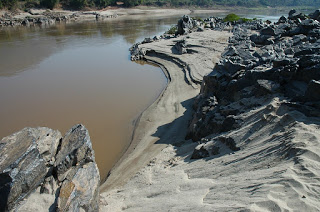Coduto Conditions for Soil Liquefaction
Liquefaction is a state of water- saturated, mostly cohesion-less soil whose shear strength is reduced to zero due to pore water pressure produced by vibration during an earthquake. The soil starts behaving like a liquid.
Please See original Article to know more about Soil Liquefaction
Donald P. Coduto a Professor of Civil Engineering in California State Polytechnic University, Pomona, ASCE Fellow, a licensed civil engineer and a licensed geotechnical engineer, has summarized in 1999 that for liquefaction to occur, all the following five conditions must be satisfied beforehand:-
1. The soil should be cohesion-less
2. The soil should be in loose state
3. The soil should be saturated
4. There must be shaking of ground of the required intensity and duration
5. The un-drained conditions must be developed in the soil due to its limited permeability
Please note that liquefaction can occur at any depth of a soil deposit where above mentioned conditions are satisfied, once liquefaction started at some depth, the flow of water occurs in the upward direction and it may cause an indirect liquefaction in the soil layers above.
In fine grained clayey soil high dynamic pore water pressure is not readily developed due to dynamic loading because they do not compress readily moreover they processes the shear strength due to cohesion.















